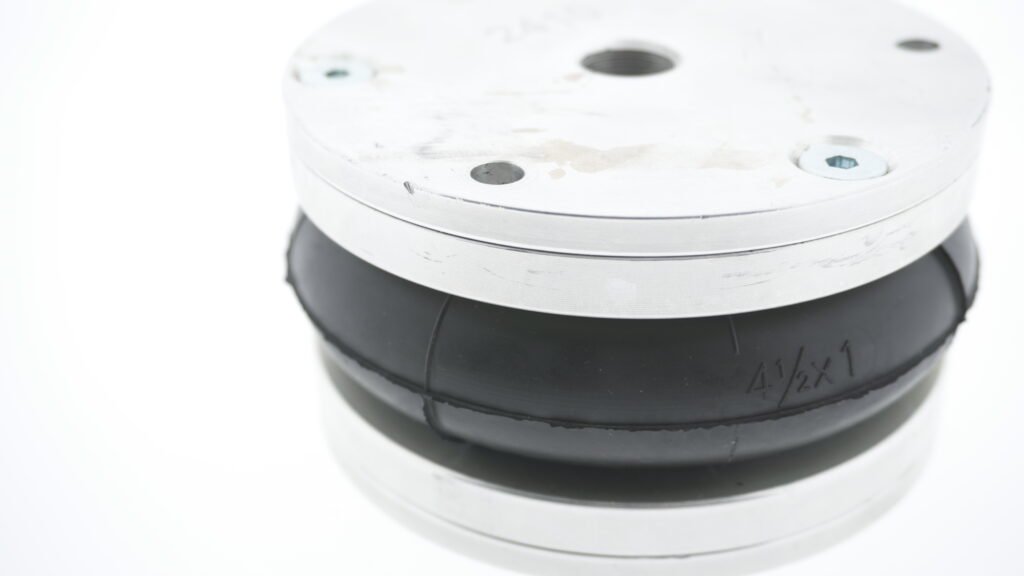
Air bellow systems play a crucial role in various industrial and automotive applications, providing effective vibration isolation and adjustable height control. To ensure these systems perform optimally, it is essential to incorporate safety stops. Safety stops are vital components that protect air bellows from damage, maximize their lifespan, and prevent operational failures. Let’s dive into the importance of safety stops in air bellow systems and how they contribute to reliable and safe operations.
Protecting Air Bellow Integrity
Safety stops serve as a critical safeguard for air bellows, preventing overextension or compression beyond their designed operating range. Without these stops, the air bellows can be over-pressurized, which might lead to damage or failure of the rubber structure. We understand that air bellows are robust, but they are not immune to the effects of excessive stroke or pressure. Safety stops ensure that the air bellow remains within its intended range, thus preventing overstretching that could rupture the material.
How Safety Stops Work
In air bellow systems, safety stops are strategically placed to prevent the actuator from exceeding its maximum allowable working height or collapsing too much during compression. These stops come into play especially when air bellows operate under varying loads and conditions, ensuring consistent performance without risking damage. Safety stops help maintain the mechanical stability of air bellows and prevent unexpected breakdowns during operation.
Using safety stops allows for controlled movement and prevents the bellow from going beyond its permissible stroke, which can otherwise lead to loss of operational efficiency. For instance, in applications where rapid inflation and deflation are required, safety stops ensure that the bellows do not face excessive wear due to sudden changes in pressure or force.
Ensuring Operational Safety
From an operational standpoint, safety stops in air bellow systems ensure that machinery operates safely without risking damage to the components or the system as a whole. When air bellows are used in vibration isolation or lifting applications, having properly set safety stops can be a significant factor in protecting both the equipment and personnel involved.
In the installation and operation of air bellows, safety stops should be part of the design to minimize the risk of overextension and unintended accidents. For instance, during maintenance or inspection, it is important to secure the air bellows using safety stops before inflating or deflating to avoid accidental collapse, which could pose safety hazards to operators.
Enhancing Durability and Performance
Incorporating safety stops not only protects the air bellows from physical damage but also extends their lifespan. Air bellows, such as those provided by Tevema, are designed with reinforced rubber compounds that can handle significant forces. However, without appropriate safety measures, repeated over-compression or over-extension can degrade the internal structure of the bellows, leading to premature failure.
Safety stops ensure the air bellows maintain a uniform load distribution, which is vital for their durability. For example, during vibration isolation, allowing the air bellows to move freely within a controlled range prevents uneven wear on the rubber surface, thereby maintaining the integrity of the material for a longer period.
Safety Stops in Different Applications
Safety stops are used in a variety of industrial and vehicle suspension systems. In vehicle applications, safety stops prevent the air bellows from collapsing entirely under excessive loads, which could affect the ride quality and compromise vehicle stability. In industrial settings, such as lifting tables or oscillating conveyors, safety stops help manage the height of the lift, preventing equipment malfunction and ensuring a stable operation.
The effectiveness of safety stops is also evident in multi-axle units. During the installation of air bellows in multi-axle systems, safety stops are crucial to ensure each bellow functions in synchronization with the rest of the system, maintaining the desired height and stability even under dynamic loads.
Installation Best Practices for Safety Stops
Proper installation of safety stops is key to their effectiveness. We recommend that during the installation process, air bellows are inspected for correct positioning, and safety stops are calibrated according to the load specifications. The stops must be adjusted to ensure they engage precisely when the maximum stroke is reached.
Additionally, for systems subjected to high-frequency vibration, safety stops should be made of flexible materials that can handle lateral motion without compromising their primary role. In this regard, ensuring that horizontal stops are also constructed flexibly is important, especially in systems with vibration isolation functions.
Safety Stops and Load Variability
One of the significant challenges faced by air bellows is dealing with variable loads. Safety stops help air bellows adapt to fluctuating weights without compromising their structural integrity. In scenarios where load conditions vary frequently, such as in commercial vehicles or industrial platforms, safety stops act as a buffer, protecting the bellows from extreme positions that could otherwise cause deformation or rupture.
Furthermore, adding an auxiliary reservoir can complement the role of safety stops by providing extra volume, thereby reducing the natural frequency of the system and improving its isolation capabilities. This setup is particularly beneficial in applications requiring high-performance vibration isolation, where maintaining a consistent working height is essential for reducing wear and tear on the bellows.
The incorporation of safety stops is fundamental to the safe and efficient operation of air bellow systems. By limiting the movement of air bellows to within a safe range, safety stops prevent overextension and excessive compression, which can lead to material fatigue and failure. They also contribute significantly to the safety of personnel and the longevity of the equipment, ultimately reducing maintenance costs and downtime.
For those of us working with air bellow systems in various industries, it is critical to prioritize the installation and proper calibration of safety stops. Not only do they protect the air bellows themselves, but they also ensure the entire system operates smoothly, reliably, and safely, thereby maximizing the value of the investment in air bellows.
